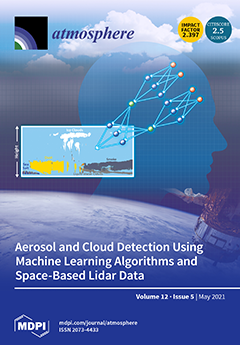Particulate matter smaller than 10 μm (PM
10) is an important air pollutant that adversely affects human health by increasing the risk of respiratory and cardiovascular diseases. Recent studies reported multiple extreme PM
10 levels at high altitude Peruvian cities, which resulted from a combination of high emissions and limited atmospheric circulation at high altitude. However, the emission sources of the PM
10 still remain unclear. In this study, we collected PM
10 samples from four sites (one industrial site, one urban site, and two rural sites) at the city of Arequipa, Peru, during the period of February 2018 to December 2018. To identify the origins of PM
10 at each site and the spatial distribution of PM
10 emission sources, we analyzed major and trace element concentrations of the PM
10. Of the observed daily PM
10 concentrations at Arequipa during our sampling period, 91% exceeded the World Health Organization (WHO) 24-h mean PM
10 guideline value, suggesting the elevated PM
10 strongly affected the air quality at Arequipa. The concentrations of major elements, Na, K, Mg, Ca, Fe, and Al, were high and showed little variation, suggesting that mineral dust was a major component of the PM
10 at all the sites. Some trace elements, such as Mn and Mo, originated from the mineral dust, while other trace elements, including Pb, Sr, Cu, Ba, Ni, As and V, were from additional anthropogenic sources. The industrial activities at Rio Seco, the industrial site, contributed to significant Pb, Cu, and possibly Sr emissions. At two rural sites, Tingo Grande and Yarabamba, strong Cu emissions were observed, which were likely associated with mining activities. Ni, V, and As were attributed to fossil fuel combustion emissions, which were strongest at the Avenida Independencia urban site. Elevated Ba and Cu concentrations were also observed at the urban site, which were likely caused by heavy traffic in the city and vehicle brake wear emissions.
Full article





